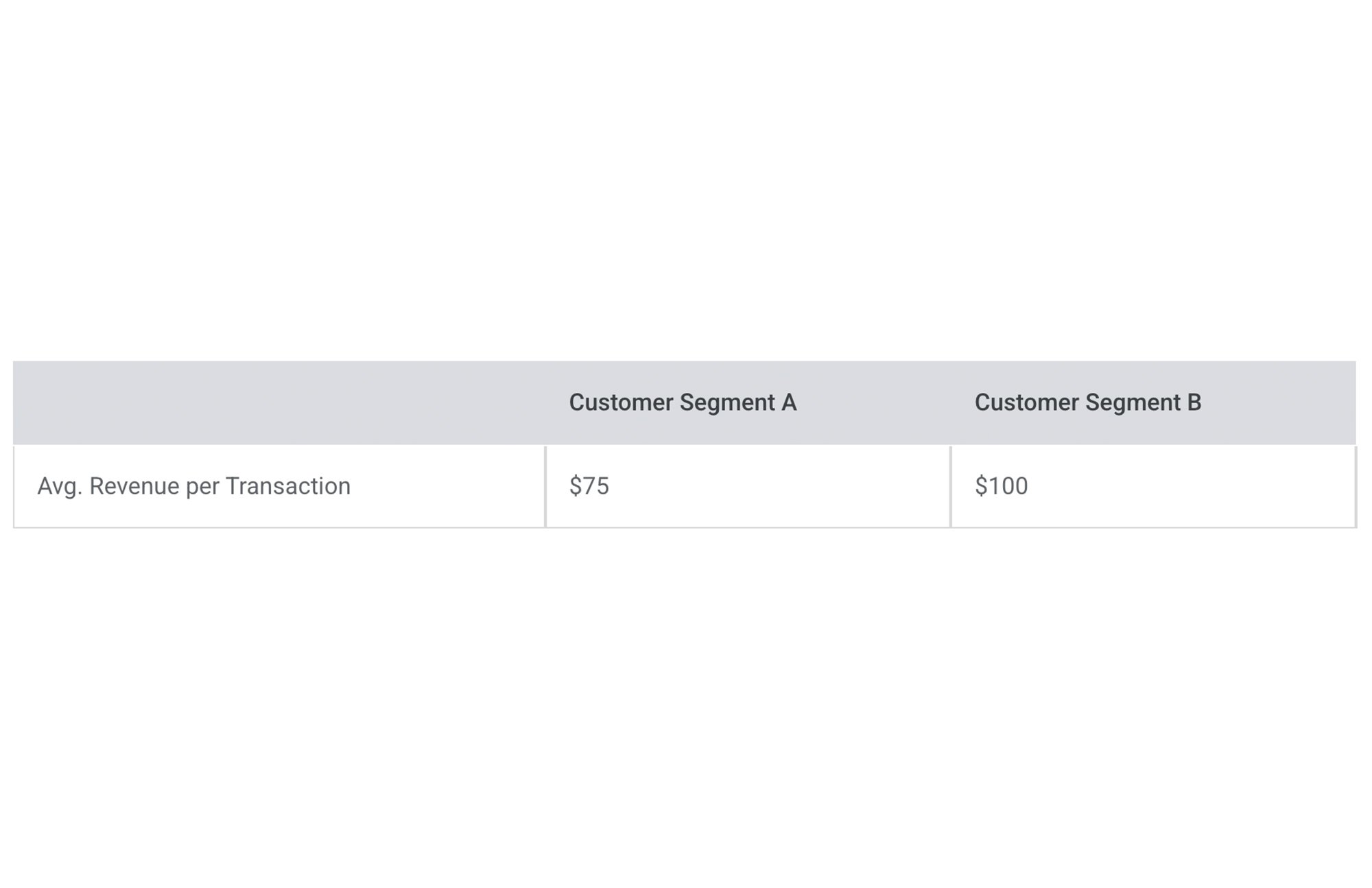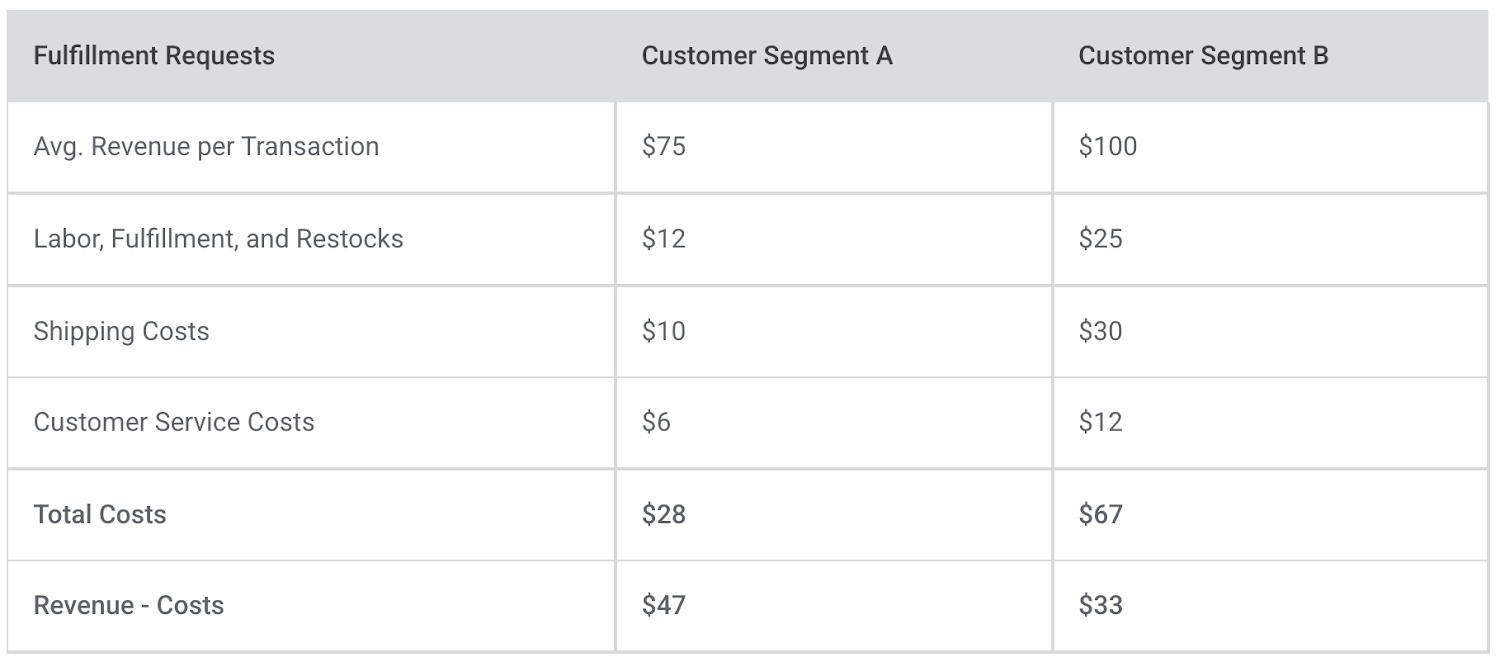How to do a customer profitability analysis
Dan LeBlanc
CEO & Founder of Daasity
What is customer profitability?
Customer profitability is far more than just the calculated lifetime value of a customer, and more than the gross or net margin generated from a transaction. A proper customer profitability analysis involves every touch point a customer has with your company, including customer service contacts, returns, custom fulfillment costs, and more.
Why measuring customer profitability is important
Measuring customer profitability is crucially important for continued business success because it helps determine whether certain customers are costing you money rather than making you money. Once you have a framework in place to measure this, it becomes easy to analyze customer profitability as frequently as makes sense for your business. You may find that a customer group you thought was the most important is actually of lower value to your company than others. These findings can then help shape and shift your business strategy to keep your initiatives and goals aligned.
Questions to ask yourself about your customers
Customers costing your company money usually comes down to the servicing costs associated with a given group. Consider the following questions as they relate to your customers:
- Do you have certain customers who call customer service frequently?
- Are there customers who have special requirements for fulfillment that cost more in labor and fulfillment costs?
- Do you offer customers free shipping and/or free returns — and if so — are there customers who are using that service too much?
How to measure customer profitability
Step 1: Identify existing channels of customer contact
The best way to begin measuring customer profitability is by identifying all the potential channels a customer can interact with your company. By understanding all potential channels of contact, you can begin to evaluate the costs associated with those channels. This not only includes the product or service cost of what your customers buy, but may include other costs such as:
- Marketing costs
- Customer service contact costs
- Social media contact costs
- Shipping costs — especially if you fund return shipping
- Return costs, including restocking or refurbishing
Once you have a better understanding of all the ways customers can interact with your company, you’re ready to move on to Step 2.
Step 2: Define your customer groups
Some businesses have well-defined customer segments, allowing them to more easily analyze their customer profitability. These segments can be based on the size of the business or business unit they buy from, or on the behavioral segmentation of customers derived from a segmentation exercise.
If your company currently doesn’t have customer groups well defined, you can define them now. Based on your business, what types of customers do you have and why do they buy from you? Using the answers to these questions will help you group together your key buyers and understand their motivations to purchase. Even if you don’t have empirical evidence or a third-party study to help define these, the knowledge you have about your business and product(s) means you’re equipped to define the groups that pertain to your organization's customer profitability.
Step 3: Find the data and establish customer profitability metrics
In this step, you need to put on your detective hat and search for the details necessary to help get your colleagues from Step 1 to here. The key questions to ask are "Do we have the data?" and “How easily tracked and accessible is the data?" By asking these questions, your organization can start to clearly define customer profitability metrics, so you can dig into which customers are costing you more money than others.
More than likely the data you’ll find and will use to establish customer profitability won’t be tied to each individual customer. Most often the data is grouped together in categories like customer service costs, which will be noted as one expensed line item in SG&A.
But because of this, you can start putting science behind your findings. For example, you could take a sample of customer service inquiries and determine the customer groups that might over-index in contacting you. Then you can dig into answering why they do this? The answers that define these costs, be it customer service contacts, returns, or others, will come in handy later.
Marketing spend and cost per transaction is another important customer profitability metric to consider, as there can be hidden pearls in this data when you break it down by marketing channel and tie it to specific customer groups.
Ultimately what you’ll end up with after finding the data and defining the metrics will be an average cost per activity, such as:
- Marketing cost to generate an order
- Average customer service contact per order
- Average cost per customer service contact
- Average return rate
- Average shipping cost
Step 4: Putting together your customer profitability analysis
Putting this all together, let’s say you have two customer segments, Segment A and Segment B. A high-level glance at the revenue they drive for your business on each transaction shows Segment B as the much more attractive group.


Armed with this data alone, you may shift your strategy, budgets, even product development pipeline to cater more to Segment B. Afterall, they are 25% more valuable than Segment A based on these numbers.
But what if the customers in Segment B aren’t actually the most valuable?
Perhaps customers in Segment B have special fulfillment requests that end up costing 30% more in labor and fulfillment fees than Segment A customers, looking something like this:


With this additional data, it now appears Segment B customers are actually costing you money beyond the cost of the actual product or service initially purchased. By considering the all the data, including all the different points of interaction between your customers and the business, you would be better off shifting your focus, strategy, and budgets towards Segment A customers for the long term health and growth of your business.
How to improve customer profitability
A good way to continue improving your customer profitability is to focus on maximizing your most profitable customer group. Understanding how much of the total business that group is, if it could be increased, and the most effective way to do so will help your organization evaluate the necessary resources, budgets, and requirements to grow that customer segment.
That being said, you shouldn’t completely abandon all other customer segments for the most profitable group. There are likely areas that can improve the metrics of less profitable segments, like those used in the above example. Leveraging what you learned from your analysis and asking the following questions will help in addressing the root cause of any lagging customer segments and getting profitability back on track:
- Are there details that can be added to the sales process that could help guide customers to a product/service that better meets their expectations?
- Are there policies that should be implemented to prevent some of these costs?
- Should your company consider implementing automation or SaaS tools to ease the process of buying and selling?
Use the customer profitability formula to stay profitable
Striving to improve customer profitability is an ongoing effort. Once you determine the data you will use and build out a structure, it should be easy to refresh this data in an ongoing fashion as your business grows. By taking the time to evaluate the different channels throughout a customer’s journey with your organization, you can reveal insights that will have a meaningful impact on your business strategy and bottom line.



